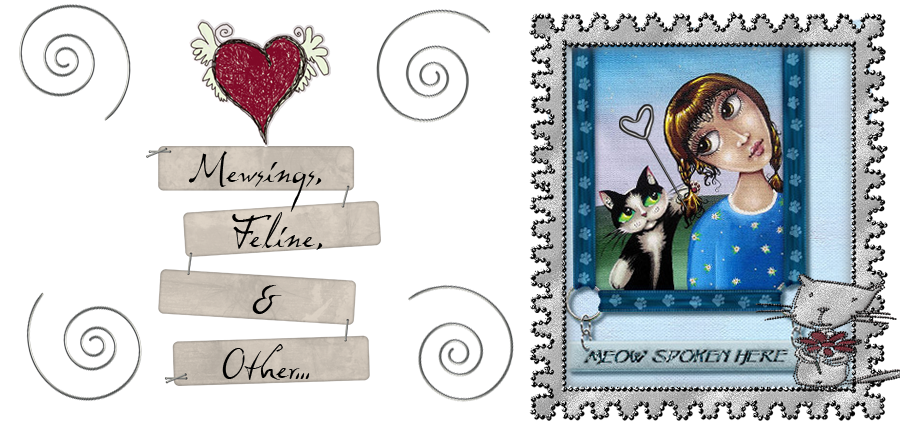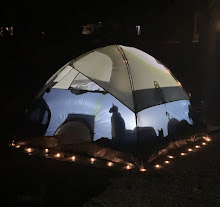
Well, the snow storm of the decade is about to unleash it's fluffy white stuff on us, and me and the kitties are snug inside, lots of movies to watch and a few honey-do's to do (I'm the honey) and my newest "snowball" cocktail, a gin gimlet, and a post I found on a fellow bloggers blog, Mimi at LOVING FOR A LIVING couldn't have come at a better time---we all need to be snug and warm!
 By Sue Manning The Associated Press / February 3, 2010
By Sue Manning The Associated Press / February 3, 2010Got a fur coat gathering dust? The Humane Society suggests the ultimate recycling — putting it on the backs of other animals.
The Coats for Cubs program by the Humane Society of the United States helps orphaned, injured, or sick wildlife by gathering fur coats and using them for nests, bedding, or cuddly replacements for mom and dad. In 2009, 2,687 fur items were donated.
"We use the discarded furs as bedding to give the animals comfort and reduce stress," says Michael Markarian, the agency's chief operating officer in Washington, D.C. "The fur garments act as a surrogate mother. It is a warm and furry substitute."
The coats go to wildlife rehabilitation centers that take in baby raccoons, chipmunks, squirrels, coyotes, skunks, and other animals, and has helped thousands of animals since it began in 2005 with the Fund for Animals.
Mr. Markarian says many of the coats are donated by people who find fur to be inhumane — whether the animals are trapped in steel-jawed traps or raised on factory farms. For those who have fur and no longer want to wear it, "This is a great way for them to give back to the animals," he says.
Amber Ginter, 13, from Kingston, Ohio, spent last summer collecting fur coats as part of a community project affiliated with the Humane Society. She put a box in her church, wrote a letter describing the project in the church bulletin and collected 30 coats in two months, she says.
"It was kind of sad to see all the furs because you know they had to kill the animals to get them," says Amber, who wants to be a veterinarian or zoologist when she grows up.
The Florida Wildlife Center in Fort Lauderdale, Florida, has used coats for wildlife babies in the past, but employees and volunteers had to scrounge for donations, twist arms, or scour garage sales and thrift stores. After becoming a Humane Society affiliate last June, the center got three boxes full of furs and are well stocked for baby season.
"It's a remarkable, generous way to make good of a tragic beginning. I know young people are involved in this effort. Bravo for understanding this better than adults and for seeing a positive way to help other animals," says Sherry Schlueter, managing director at the Florida Wildlife Center in Fort Lauderdale.
The center houses what they believe is the largest wildlife trauma center in the United States, Ms. Schlueter says. Of the 12,000 animals cared for in 2009, just over 1,900 were orphaned babies, including about 1,000 gray squirrels, Virginia opossums, and raccoons — those most likely to benefit from the furs.
The center is expecting at least 1,000 additional baby animals in 2010 because a nearby wildlife rehab center closed last year.
The coats are always needed, but they are especially welcome in one of the worst winters in memory, says Erica Yery, president of the Wild Bunch Wildlife Rehabilitation Center in Alexandria, Virginia. Most of the baby animals she has now are raccoons who are making good use of the coats.
"They go in and snuggle up. Of course, they might tear it to shreds after a while," she says. But she knows they like the fur — if they didn't "they would just throw it out. They wouldn't keep in it their nesting box." The coats are great, but caps and hats are even better, she says, because she doesn't have to cut them and they are already rounded like nests.

The current Coats for Cubs coat drive technically ends on Earth Day, April 22, 2010 but the Humane Society will accept coats any time of the year, Markarian says. Donations can be shipped to the group or turned in to any Buffalo Exchange, which has stores or franchises in 14 states.
What Kind of Furs do People Donate?
The boxes of fur shipped out to wildlife rehabilitators contain common types of fur like mink, fox, rabbit, and raccoon. Occasionally we receive rarer types of fur, such as lynx and seal fur. The strangest coat of all was a vintage monkey fur coat, now fortunately illegal under CITES. The donations range from full length fur coats to accessories such as stoles, capes, hats, and handbags, and fur trimmed items such as gloves and jackets.
How Do I Donate?
The HSUS is partnering with BUFFALO EXCHANGE , a vintage clothing chain with 25 stores across the country, to collect all kinds of fur, including coats, trim, and accessories. Now through Earth Day, April 22, 2010, you can bring your fur to any Buffalo Exchange store and let the staff know it is a donation for The HSUS. For a list of store locations, CLICK HERE
How Will I Know That The HSUS Has Received My Donation?
If you want to receive a letter of thanks, please include a note inside the box stating your email address or your mailing address requesting an acknowledgment. If you've requested an acknowledgment, you will be sent a letter of thanks 2-3 weeks after the fur has arrived. Please save this letter if you want to claim a tax deduction.
What Do I Need to Do If I Want to Claim a Tax Deduction?
If you itemize deductions, you can claim the fair market value of your donation. The fair market value is the amount for which you could sell the fur today—not how much it cost to purchase the fur. This is a judgment call that you will have to make, based on the condition and type of the fur. If you value the fur at $5,000 or more, the Internal Revenue Service will require a "Qualified Appraisal." You must have this appraisal performed before you donate the fur. You may need to include the letter of receipt from The HSUS in your tax returns. If you have any questions, you may want to consult your tax attorney.
To claim a tax deduction for your gift, please mail it directly to The HSUS. Simply pack up the fur in a sturdy box and send it to:
The Humane Society of the United States
2100 L. St. NW
Washington, DC 20037
attn: Coats for Cubs
Please make sure to include your full name and address so The HSUS can mail you a letter suitable for claiming a tax deduction. For more information on the program and claiming a tax deduction, click here CLICK HERE
I Am a Wildlife Rehabilitator—How Can I Participate?
As more people hear about this wonderful way to aid wildlife, fur donations to The HSUS increase. We are always looking for wildlife rehabilitators who will give the fur back to the animals. If you would like to help, just send an e-mail to furfree@hsus.org, call 301–258-1490, or write the above address.




Hey, what a great idea!
ReplyDeleteI saw this on the news in our area as well, such a good idea! I'm scared of fur coats, but if I had one I'd give it to the critters :)
ReplyDeleteHope you and the kitties are staying warm out there! I keep watching all the reports of all the snow!!!
I read about this. What a great idea to make these little animals feel at home. We won't think about the fur as coats :(
ReplyDeleteI did not know this. What a great idea. Thanks for posting it.
ReplyDelete